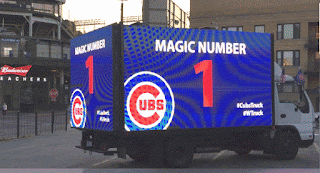The Marketing Strategy Of Faber Castell
Founded in 1761 by Casper Faber, the brand that
breathes creativity is the world's largest manufacturer of pencils. The German
company is a leading company in more than 120 countries and sells various
products around the world, such as colors (posters, pastels, watercolors), art
and craft supplies, pens, pens, markers, pens, pens, markers, lapices posca, brushes, geometry boxes,
office supplies, crayons, modeling clay and more.
Targeting,
Segmentation And Positioning In The Marketing Strategy Of Faber Castell Brand
Segmentation helps to understand the different groups
of customers in the market and their different needs and desires. Faber Castell brand uses a combination
of demographic and psychographic variables to be segmented, eg. Age, sex,
marital status, parental income, region, behavioral aspects, etc.
The company offers advice, some of which use mass
targeting strategies such as pencils, pens, glue, surfboards painted with
posca (tablas de surf pintadas con posca) markers, art and leisure
supplies, professional colors, and office supplies.
Positioning is the creation of imaginary stimuli in
the minds of customers that help brands outperform their competitors. Faber Castell brand uses a combination of value-based positioning and other
strategies.
Competitive
Advantage In The Marketing Strategy Of Faber Castell
This 256-year-old company is a leading global network
company with more than 8,000 employees, including more than 1,100 in Germany.
This company has a lot of experience in the sector, which not only makes it a
different stationery company, but also helps it to establish itself in the most
competitive and less organized market.
The offer varies: The Faber Castell brand has a strong portfolio of craft products and
writing supplies, not purely for kids, but also for professionals around the
world.
BCG Matrix In
The Marketing Strategy Of Faber Castell
Faber Castell works in areas such as Creative Studio,
Art & Graphic Products, excellent stationery, memory design crafts and
children's stationery.
Thus, given the competition from the disorganized
sector in various developing countries, the stationery and professional writing
segments for children are a question mark in the BCG matrix, while the other
business segments dominate and therefore play a major role in the BCG matrix.
Sales Strategy
In Faber Castell's Marketing Strategy
The company uses a physical sales model to make
products available through different channels in rural markets. They use
distribution environments such as pop & moms, retail stores,
retailers/wholesalers, ecommerce sites, and supermarkets/department stores. The
company's offerings are available in 9 countries, while sales teams from 22 countries
supply the company's products in more than 120 countries.
Participation
In The Marketing Strategy Of Faber Castell
The German manufacturer of pencils Faber Castell brand is recognized for
its innovation, quality and creativity to fulfill the evolving needs of its
clients. The brand is then subdivided into sub-brands of children's brands that
include children's creativity and first-class antiretroviral products for
children. High-end brands such as Creative Studio and Design Craft, while the
Fine Brands segment includes Graf von Faber-Castell and Faber-Castell Design.
Competitive
Analysis In Faber Castell's Marketing Strategy
The challenge for companies operating in this sector
is the availability of an ultraperipheral market, which not only reduces distributors'
profit margins, but also affects the asking price, which is no exception to
Faber Castell's rule. The organization competes on the principle of a large
number of contents, product variants and several sub-brands such as Ambition,
Ondoro, Loom, N'ice Pen, GRIP 2011 and many others.




Comments
Post a Comment